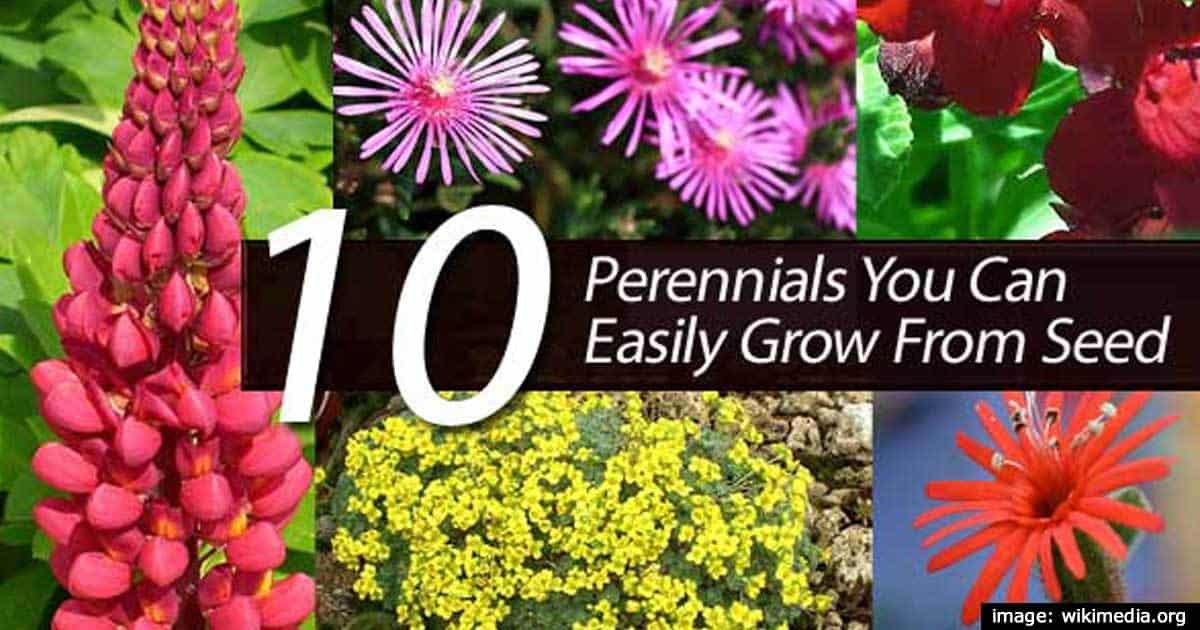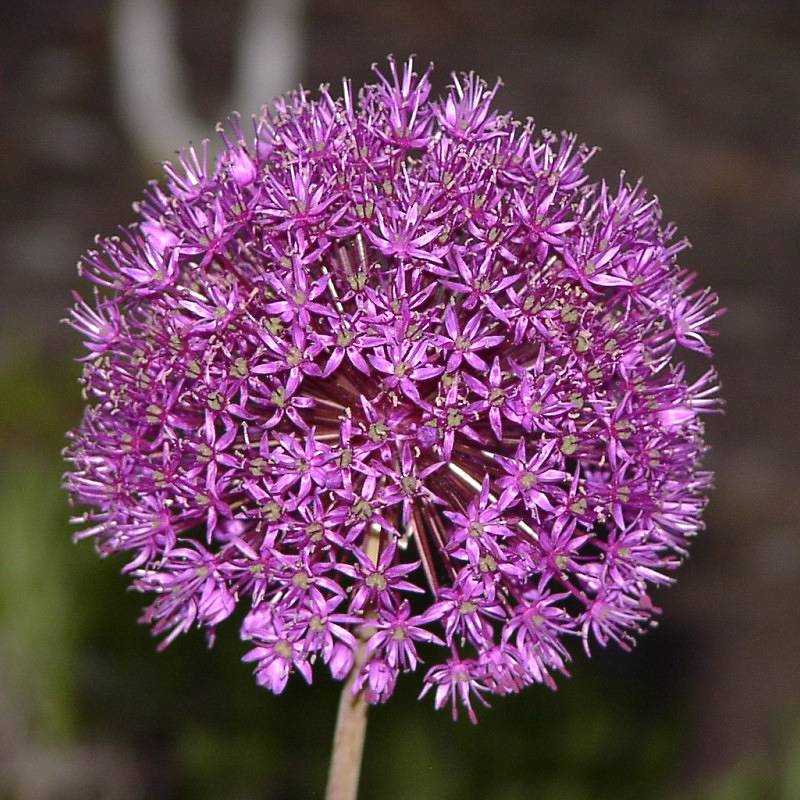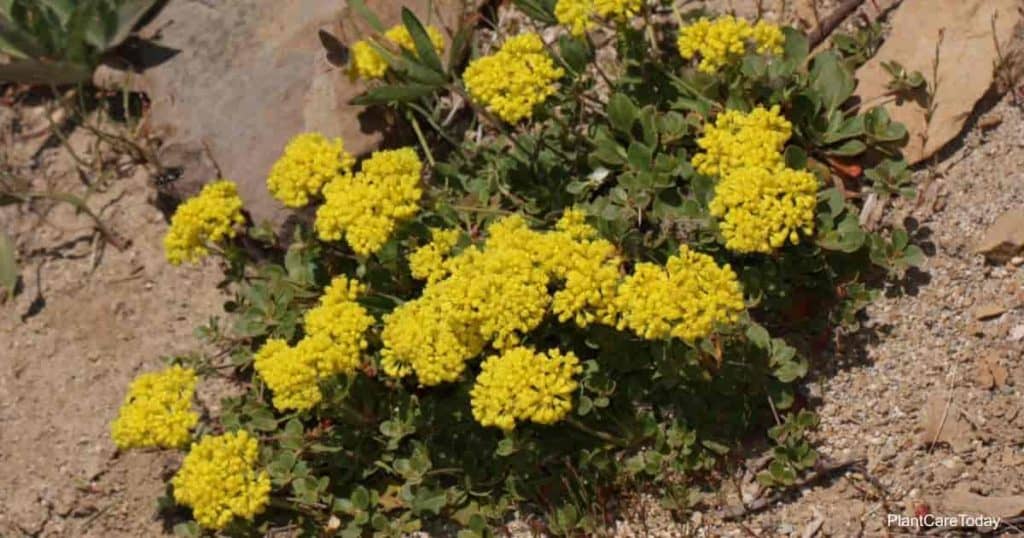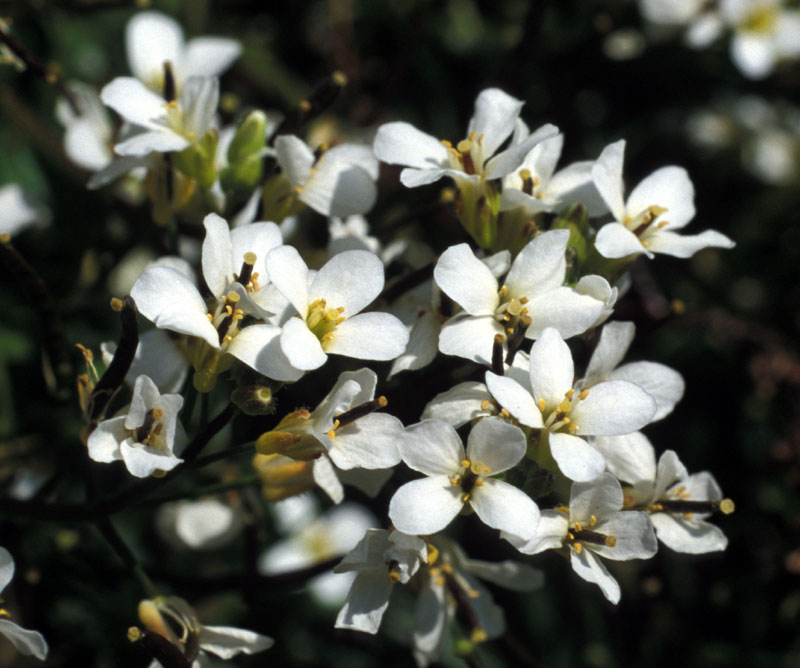The thought of starting plants from seeds scares many home gardeners. They think it takes great skill or special equipment. Truth is… starting seeds in just like elementary school… easy.
There are many benefits to growing your own… you’ll save money, seeds are cheap, and you can make some new friends as you share your “crops.”

It’s also one of the best ways to learn to grow. Where do you start, and what are the best plants to grow?
You may believe that it’s difficult to start plants from seed, but actually, it’s extremely easy. Not only is it easy, but it is also very thrifty.
Read our Plant Care Today article: Easy Perennial Flowers That Come Back Every Year.
A package of seeds usually costs several dollars less than half a dozen seedlings at your local nursery. If you were to buy as many seedlings as a package of seeds can produce, you would easily spend $100 or more.
That’s why only makes good sense to buy seeds for a couple of dollars and plant them yourself to produce your own healthy seedlings to grow in your garden and trade with fellow gardeners.
In addition to making the wisest use of your gardening dollars, there are other very good reasons for growing plants from seed.
For one thing, there are a number of plants that must be grown from seed because it is the only way to propagate them or because they are rare.
Additionally, planting young seedlings in your garden is usually far more successful than starting off with a plant purchased from a nursery that has spent a great deal of time in a pot. Read more about the easiest perennials to grow from seed and some additional steps on how gardeners can easily grow them.
Simple Steps To Growing Perennials From Seed
If you’ve ever planted a bean in a paper cup when you were a child in school, you pretty much know how to start seedlings. The sole purpose of seeds is to burst into life, and all you have to do is facilitate this process.
Once you have placed your seeds in appropriate containers with good, well-drained soil, you can nurture them along indoors, or (for some) you can place them outdoors to make the most of the growing season of nature.
This is a good idea with cold hardy perennial seeds. This type of seed does best when exposed to a lengthy period of cold before time for germination.
With this type of perennial seed, you can start your seeds in late December or early January. Your seedlings will appear cheerily in the early spring.
1. Create Your Own Starter Mix!
Although seeds are very cheap, potting soil and pots are not. You can save money by making your own soil to start your seeds. It is very easy and very inexpensive. To make a good starter mix, combine the following:
- One part of clean, washed sand
- Two parts of compressed peat-based potting soil
- One tablespoon of slow-release pelican fertilizer per cubic foot
Mix these ingredients in a large, clean container. Be sure to start with sterile, clean ingredients and keep them protected from contamination for the most successful use as a seed starting next.
2. Sow Your Seeds
Rather than sowing seeds one seed to a pot, simply fill a large pot with your potting mix and tap the soil down so that there is about a quarter inch of space at the top.
Sow the entire contents of your seed packet into this pot, and top it off with very small gravel, such as aquarium gravel.
If the seeds are very fine, sow them on top of the gravel rather than under it. Using this method helps keep the soil evenly moist and prevents contamination by fungus and other airborne threats.
3. Water Carefully
When you water your seeds, do so very gently and carefully. It’s best to water from the bottom and allow the soil to soak up the water rather than watering from the top, which will disturb the seeds.
4. Select The Strongest Seedlings
As your seedlings begin to grow, prick out (separate) the largest and most hardy specimens and replant them in small pots of their own.
Your seedling pot should be 2 1/2 inches square and filled with your sterile potting mix. Take great care when pricking out seedlings to pull up the entire root ball without damaging the roots.
5. Provide The Right Kind Of Light
Continue to water your seedlings gently without disturbing the soil, and be sure they have ample indirect sunlight. Be patient and handle your seedlings with care, and you will soon have strong, healthy plants to transplant into your garden.
10 Top Picks In Easy-To-Germinate Perennials
Here are ten of the easiest cold-hardy perennials to grow from seed:
Allium

By Hokuzai at the German language Wikipedia, CC BY-SA 3.0,
Allium is an attractive flowering chive that is very easy to grow from seed. Allium is available in both small and giant varieties, but it is not always available as seedlings from nurseries.
Additionally, the fibrous roots of this plant should be kept moist. For this reason, they are not available as bulbs. They must be grown from seed.
This is why the plant and its flowers are necessary to grow this attractive and versatile plant from seed. It is best to sow the seed late in the fall and into midwinter. If you wait too long, you may find yourself waiting a whole year before your plants emerge.
Penstemon

Penstemon (beardtongues) is a very hearty and attractive native perennial that is sometimes mistakenly called Salvia. This good-looking, hearty plant produces an abundance of dainty red flowers throughout the spring. There are two varieties of Penstemon: Scarlet Bugler and Bandera Rocky Mountain.
Be sure to read the back of the seed package carefully and select the right type for your zone. Follow package directions closely as some types of Penstemon germinate very quickly while others need to follow the freeze-thaw cycle.
Lupine

Lupine is a legume that comes in a wide variety of colors. The most famous of these is the Texas Bluebonnet. These perennials are a bit hard to get started because they do have specific soil requirements. Gardeners often find that their lupines do well in the first season but do not return to the second seed.
When growing lupines, it is very important that you understand the type of soil they need and provide it reliably so that they can continue to thrive and reproduce year after year. Lupine seeds are large and resemble beans or peas.
They have a very hard outer shell that must be slightly breached to facilitate successful germination. You can abrade this coating with sandpaper or soak seeds overnight in warm water to facilitate the germination process.
Native Columbine

Native Columbine is the state flower of Colorado, and it is a lovely and hardy native perennial. There are actually two types: Rocky Mountain Columbine and Canadian Columbine.
Be sure to check the back of the package to select the right type for your zone. Also, be sure to check the date on the package. When planting Columbine, it is very important to have fresh seeds.
Wild Buckwheat

Wild Buckwheat grows very rapidly in extremely poor soil. For this reason, it is an excellent choice for xeriscaping or a rock garden.
Look for the sulfur flower variety to add abundant yellow blossoms and evergreen foliage to your dry landscape. Wild Buckwheat thrives in a wide variety of climates, from humid to dry. Its seeds are nutlike and oblong.
Details on Wild Buckwheat aka Eriogonum Umbellatum
Sow them in the wintertime to experience freeze and thaw cycle. You can expect them to emerge abundantly and enthusiastically throughout the months of April and May. Your perennial plants will be fully mature and established by late summer.
Primrose

By Stan Shebs, CC BY-SA 3.0, https://commons.wikimedia.org/w/index.php?curid=295728
Primrose is an excellent perennial for both shady and sunny settings. Japanese Woodland Primrose is perfect for a shady yard or garden. Himalayan Primrose prefers warmer weather and a sunny setting.
More on –> Growing Primula Vulgaris
Both types can be started indoors by planting the primrose seeds in pots on a sunny windowsill during the winter, but you may be surprised to learn that you will get even better results by sowing them outside during the wintertime and allowing the seeds to experience the natural freeze–thaw cycle.
Silene

By Photo by and (c)2008 Derek Ramsey (Ram-Man). Co-attribution must be given to the Chanticleer Garden. – Self-photographed, CC BY-SA 3.0, https://commons.wikimedia.org/w/index.php?curid=3532850
Silene is a lovely perennial with abundant pink blossoms. This hardy perennial naturalizes very easily and can quickly take over your garden if you’re not careful. This can be a good thing if you have a lot of ground to cover. Growing Silene is easy because seeds germinate and grow quickly and are self-sowing once the plants are established.
Dianthus

By Stefan-Xp – Own work, CC BY-SA 3.0, https://commons.wikimedia.org/w/index.php?curid=862714
Dianthus (also known as “Pink”) is a beautiful and fragrant perennial that creates a dense mat of colorful pink flowers. Sow the seed in midwinter for spring germination. Pink is an incredibly hardy perennial that can withstand all manner of rough treatment.
Draba

CC BY-SA 3.0, https://commons.wikimedia.org/w/index.php?curid=184547
Draba is an excellent perennial choice for xeriscaping. With attractive yellow or white flowers, this highly drought-tolerant miniature thrives in cracks in rock walls, narrow troughs, and other arid and unwelcoming settings.
For spring germination, you should sow Draba seeds in December or January. You can also start them inside and keep them in pots as long as you like before transplanting them. They tend to thrive wherever they find themselves.
Hardy Ice Plant

Hardy Ice Plant is a succulent South African groundcover that is very useful for covering large areas of soil with attractive, colorful perennial flowers and leaves. You can reproduce this type of plant from cuttings; however, it’s really easier to grow them from seed.
The seed is very small. In fact, it resembles dust. While this is a very hardy little perennial, you must realize that it cannot tolerate the freeze-thaw cycle during germination. Being from South Africa, it needs to be planted during warm weather.
Wait to sow your seeds until after the final hard frost. Late spring is the best time to plant Hardy Ice Plant. The seeds will germinate very quickly and bloom before the end of the summer.
If you live in a colder region, you should start the seeds indoors and plant your seedlings outside in early summer. They will need to be fully established to make it through the first winter.
Local Natives Can Be Delightful Perennials
For the very best and easiest planting of perennials from seed, it pays to get to know your native plants. Wildflowers and attractive types of greenery that grow naturally in your area will have the very best chance of doing well in your yard and garden year after year.
Many native plants are good-looking and edible. Some are even superfoods! For this reason, in addition to planting native seeds, you should also take a judicious approach to yard and garden care.
Take the time to identify the plants that volunteer. You may decide that you would be wiser to encourage them than to try to eliminate them!
Images: source